Having as many PCIe cables as your graphics card needs would be best. Depending on your GPU, this could mean a single 6-pin line to 3 x 8-pin cables on powerful cards like the NVIDIA RTX 3090.
PCIe components need to be powered, just like any other component on the motherboard. Usually, their power for smaller and weaker cards comes from the PCIe slot itself. However, some features, particularly the graphics cards, need much more power than your average add-in cards, like network adapters, SATA expansion or video capture cards, etc.
As such, you need to calculate how many PCIe cables you need before purchasing the correct power supply unit. PCIe power cables do not come packaged with graphics cards. Instead, they come packaged with power supply units.
Often you will hear complaints regarding graphics cards not working or not even initializing. This is usually a power-related issue.
You also often hear people ask if all the pins on the graphics cards need to be connected. The answer to this question is a resounding YES! It would need all the pins connected for the graphics card to work.
Suppose your graphics card has 2 x 8 PIN requirements. Then, you must provide it with 2 x 8 Pin PCIe cables from the Power Supply Unit.
Let us explore this topic a bit further below.
TABLE OF CONTENTS
How Many PCIe Cables Do I Need?
What are PCIe cables? PCIe cables are separate power cables from the Power Supply Unit. They are used by demanding graphics cards.
The number of PCIe cables you need primarily depends on the type and amount of installed graphics cards.
For instance, some graphics cards, like the NVIDIA GT 710, do not require a PCIe cable. This weak graphics card receives its power supply from the PCIe slot itself.
Starting from mid to high and extreme range, you may find cards that need as low as a single six-pin PCIe cable to 3 x 8-pin lines on the likes of NVIDIA RTX 3090.
If you have two NVIDIA RTX NVIDIA 3090 installed, you will need 6 x 8-pin cables.
The rest of the standard expansion cards, like a video capture, network adapter, sound card, USB hub, etc., do not require a PCIe cable.
Also Read:
Visual Guide for PCIe Cables and Connectors
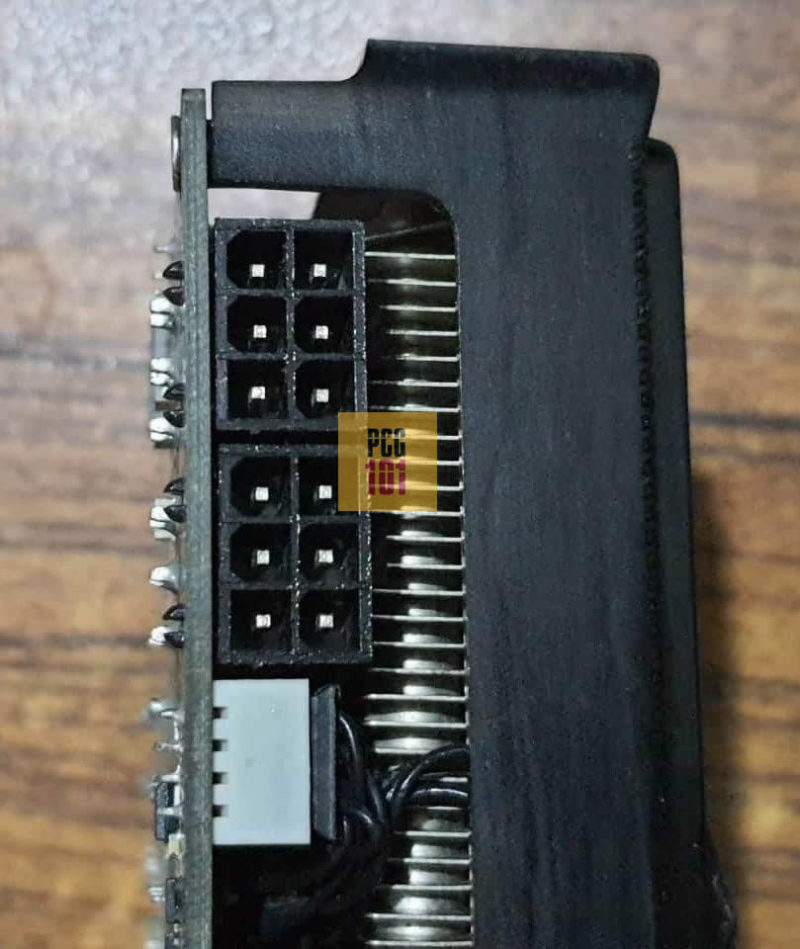
The graphics card above requires 2 x 6 pins.
However, when inspecting my power supply, I see that it has 2 x 6+2 PCIe Cable connectors:
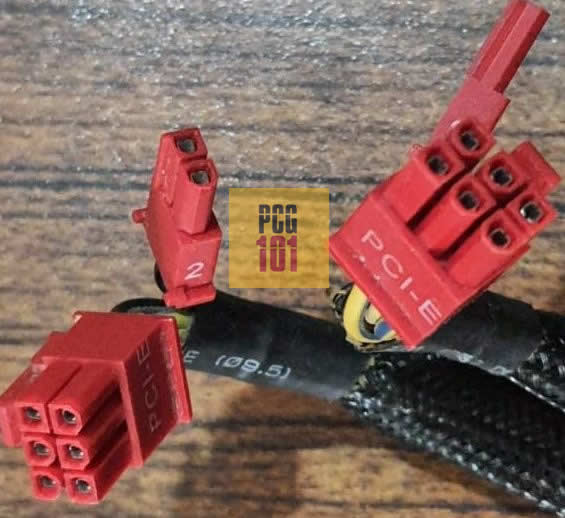
A 6+2 Pin PCIe cable has a single sizeable 6-pin connector and an additional 2-pin split if you need more power. A 6+2 pin cable can power an 8-pin slot on a graphics card.
However, my graphics card does not have a dedicated slot for an 8-pin cable. Instead, it requires two separate 6-pin PCIe cables. Hence the additional two pins will be useless in this case and will not be utilized.
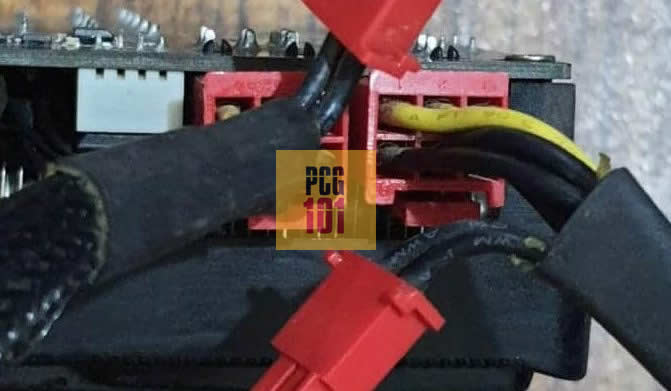
Here you can see that both PCIe cables available to me from the power supply are connected to the graphics card. However, both lines have two pins not utilized.
You have to have all the pins ON THE GRAPHICS CARD plugged in.
Also Read:
What Uses PCIe Cables?
As mentioned, the most critical expansion card that uses PCIe power cables is the graphics card because many mid to high-range graphics cards draw far more power than the 75W provided by the PCIe X16 slot.
PCIe Power Cables and Connector Types
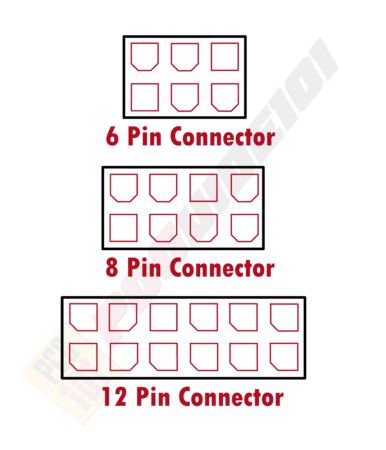
Different PCIe power cable connectors differ in how much power they can supply to the card.
The number of PCIe cables and the type of connector you need would depend entirely upon the graphics card you install.
Knowing how many PCIe cables you need with the graphics card is pretty straightforward. You will need to look at the Power Inputs Connectors physically or through the spec sheet of the card for this.
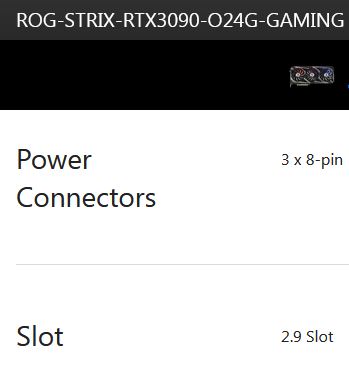
As shown above, ASUS ROG Strix RTX3090 Spec Sheet tells you how many power connectors, aka PCIe cables, you will need. In this, you will need three 8-pin PCIe cables.
6-Pin Connector
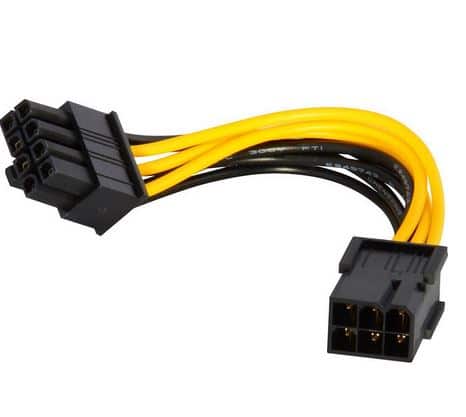
The 6-Pin connector can provide up to 75 watts of power.
This is the most common connector used by many low to mid-range cards. So if your graphics card has power requirements of anywhere greater than 75 watts to 150 Watts max, you will likely need one 6-pin PCIe cable.
For graphics that consume 150 watts of power, 75 watts will come from the PCIe x16 slot and another 75 from the 6-pin cable.
8-Pin Connector
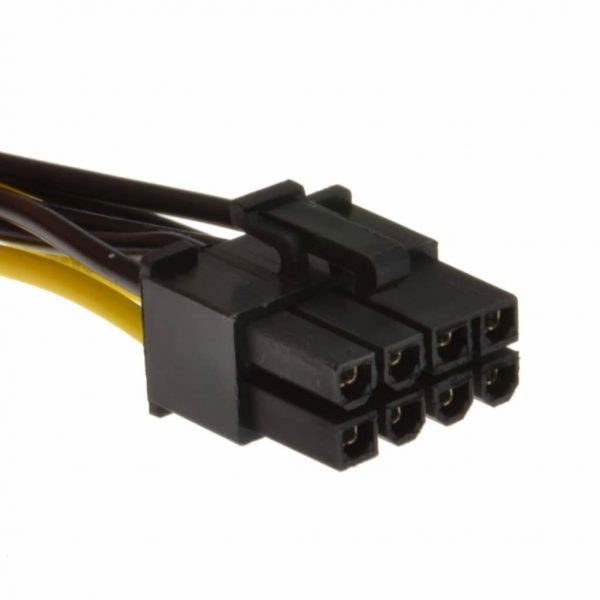
The 8-Pin connector is typically found on cards with high power requirements. It can supply up to 150W from the 12V rail on the PSU to the graphics card.
With eight pins, you can run more intensive cards that draw more power from the system.
The 8-pin cable comes in two flavors. You can get one that has a single 8-pin connector in one terminal. The other comes as a 6-pin module with an extra 2-pin attachment. This one is more modular and can be used on both 8-pin and 6-pin cards (as seen in the guide above).
12-Pin Connector

This is used by some of the newer cards, like the lineup from NVIDIA’s RTX 3000 series. These may need an adapter since many PSUs lack the 12-pin output connector.
Each cable with 12 pin connector can provide from 500-600 watts of power depending upon the wire gauge of the line.
Pigtail PCIe Cables
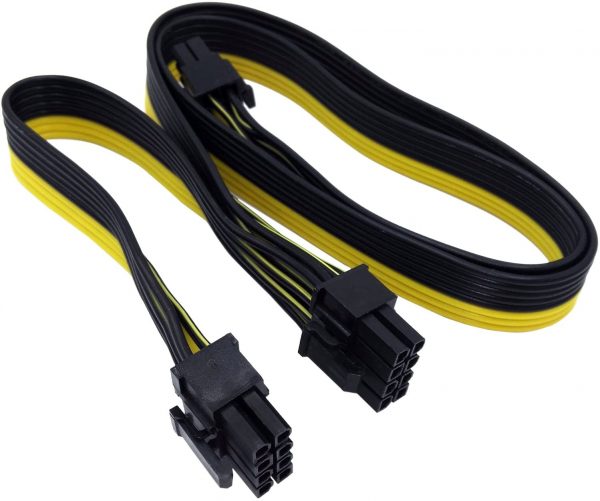
A PCIe pigtail connector is a split cable that connects to the power supply unit on one end and then separates into two equal connectors.
For instance, the cable above is an 8-pin pigtail cable. It connects one end to an 8-pin output connector on the power supply unit and then separates into 2 x 8 pin connects on the other side.
With this cable, you can power a single graphics card with a 2 x 8-pin connector or two graphics cards with a single 8-pin connector.
Many gamers and enthusiasts debate whether separate cables should be used instead of pigtail cables for powering graphics cards.
Many hardcore enthusiasts believe that separate cables should be the way to go. However, others have proven, as shown in the analysis below, that pigtail cables have a minimal impact on performance.
Also Read: Do Motherboards Come with Cables?
Cables and Graphics Card Maximum Power Consumption
The following table highlights the number and type of PCIe cables used and the corresponding max power consumption by the connected graphics card.
| PCIe x16 (75W) | 6 Pin Cable (75W) | 8 Pin Cable (150W) | 12 Pin Cable (600W) | Max Power Consumed |
|---|---|---|---|---|
| 75W | 0 | 0 | 0 | 75W |
| 75W | 1 x 75W | 0 | 0 | 150W |
| 75W | 0 | 1 x 150W | 0 | 225W |
| 75W | 2 x 75W | 0 | 0 | 225W |
| 75W | 1 x 75W | 1 x 150W | 0 | 300W |
| 75W | 0 | 2 x 150W | 0 | 375W |
| 75W | 1 x 75 | 2 x 150W | 0 | 450W |
| 75W | 0 | 3 x 150W | 0 | 525W |
| 75W | 0 | 0 | 1 x 600W | 675W |
More Than One Power Connector on GPU
You can expect to find multiple power connectors on most mid-high-end cards.

Sometimes cards have non-uniform pin configurations as well. For example, NVIDIA’s GeForce GTX 1080Ti graphics cards have two connectors: an 8-pin connector and a 6-pin connector.
You can’t use a single PCIe cable for both connectors. In this case, you will need two PCIe cables to power the graphics card. And, because it has high power needs, about 250 Watts, the 300W supplied to it will be sufficient, i.e., 75W from PCIe x16 slot, 75W from 6 pin connector, 150W from 8 pin connector.
Also Read: How to Check How Many PCIe Lanes I Have?
Adding More PCIe Cables and PCIe Cable Adapters
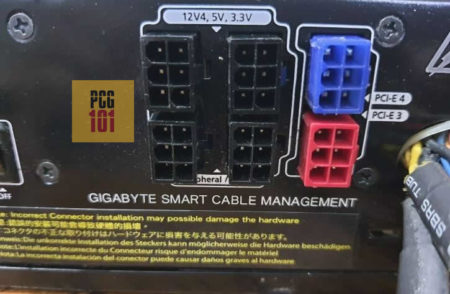
If you have a modular Power Supply Unit, you can add more cables to the PSU. You can also use the above pigtail cables, which split a single line into multiple connectors.
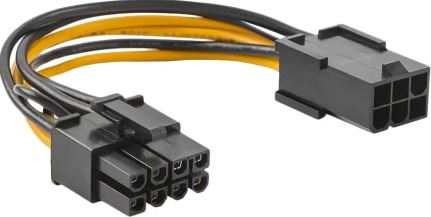
Also, some PSUs do not have the required type of power connectors. You can use an adapter like the one above to get around this.
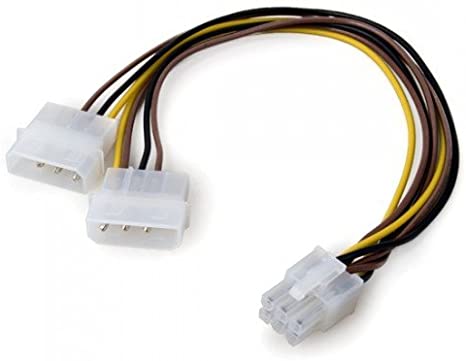
Using a Molex adapter, you can use an old PSU to increase the PCIe power cable.
You must not exceed your Power Supply Unit’s output power rating when installing PCIe cable adapters.
I advise that you use the following automatic calculators to gauge if your PSU is sufficient for your build:
Also Read: What are Motherboard Standoffs?
Are All PCIe Cables The Same?
No, all PCIe cables are NOT the same. As you can see from the discussion above, there are many different types of PCIe cables.
The following are the common PCIe cable types:
- 6 Pin Cable
- 6+2 Pin Cable
- 8 Pin Cable
- 12 Pin Cable
The 6+2 Pin cable can work as a 6-pin or an 8-pin cable.
These cables have different power ratings, as explained in the table above. A 6-pin cable has a power rating of 75W, 8 Pin cables have a power rating of 150W, whereas the newer 12-pin lines have a 600W power rating.
Different graphics cards have additional PCIe power cable requirements. Some require a single 6-pin, others need a single 8-pin, and others may require multiple cables with mixed connectors, i.e., one 6-pin and one 8-pin; it all depends upon the power requirements of the graphics card.
Conclusion
Users must understand their cards and power supply units to know precisely how many PCIe cables they need.
Depending on the card, you can have different power connectors, which may require other types and numbers of PCIe cables. Again. You do need to have ALL the connector’s GPU connected to the power supply.
Furthermore, you may need an adapter to convert the available power connectors to the more standard six and 8-pin ones or even the 12-pin one.
FREQUENTLY ASKED QUESTIONS
1. Are PCIe Cables for GPU?
Yes, PCIe cables are intended for the graphics cards. Graphics cards are perhaps the only commercial devices that use the PCIe cables from the Power Supply Unit.
2. Can I Use a 6 Pin on an 8 Pin GPU?
You can’t use a six-pin PCIe cable on an 8-pin GPU. Connecting all the pins on a graphics card to operate it would be best.
Take, for instance, the following graphics card:
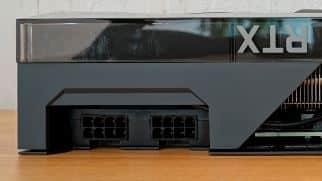
Graphics Card with two 8 Pin connectors. Source: Wikimedia
If you were to connect a 6-pin PCIe cable in either of the connectors, then this GPU would not work.
3. What Cable Should I Use for GPU?
The PCIe cable you use for your GPU depends entirely on your graphics card’s specifications.
Take, for instance, the specs for the NVIDIA RTX 3080 below. This requires a 2 x 8-pin PCIe cable.
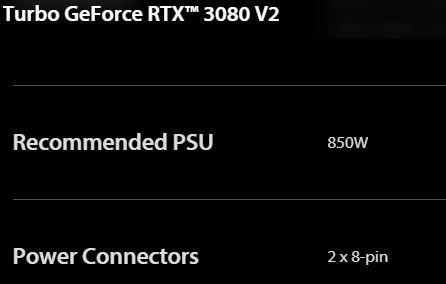
You can find a variety of graphics cards. Some graphics cards do not require a PCIe cable, and others may need single or multiple wires of different pin counts.
4. Can a Graphics Card Run Without a Power Supply Cable?
Not all, but some graphics cards can work without PCIe cables from the power supply unit.
Take, for instance, the ASUS Dual GTX 1650 graphics card:
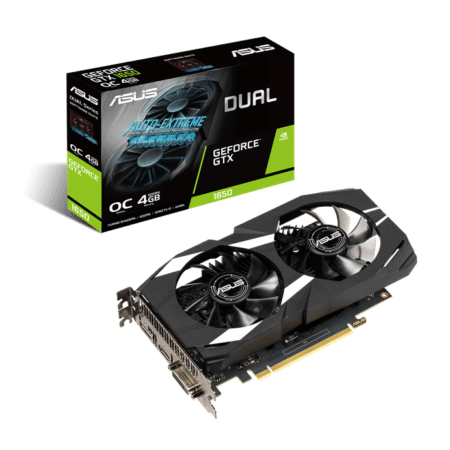
DUAL-GTX1650-O4G Requires no PCIe cable. Source: ASUS
This graphics card requires no PCIe cable.
A vast majority of the graphics cards, however, do need PCIe cables.
Popular Build Guides:

Need help for RTX 5000 Installation in Dell PowerEdge R630
Sure what do you need help with?
Hi Atif – thanks for this excellent site! I’m building a PC and have a Corsair HX1000 PSU and a Zotac RTX 3080ti. The only PCIe cables to connect the both are 8pin connectors with “pigtails” – can the 8pin connectors be used or should I only use 8pin connectors that don’t have pigtails attached? I couldn’t find any 8 pin cable without the pigtails, among the cables that came with the PSU.